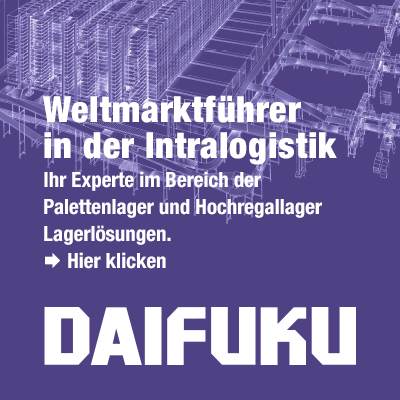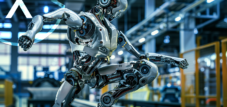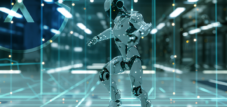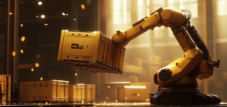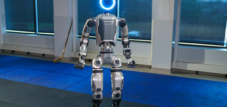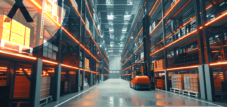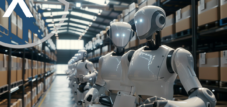Skillfully lever packages: Why Stretch from Boston Dynamics is the new star in warehouse robotics
Language selection 📢
Published on: November 12, 2024 / Update from: November 12, 2024 - Author: Konrad Wolfenstein
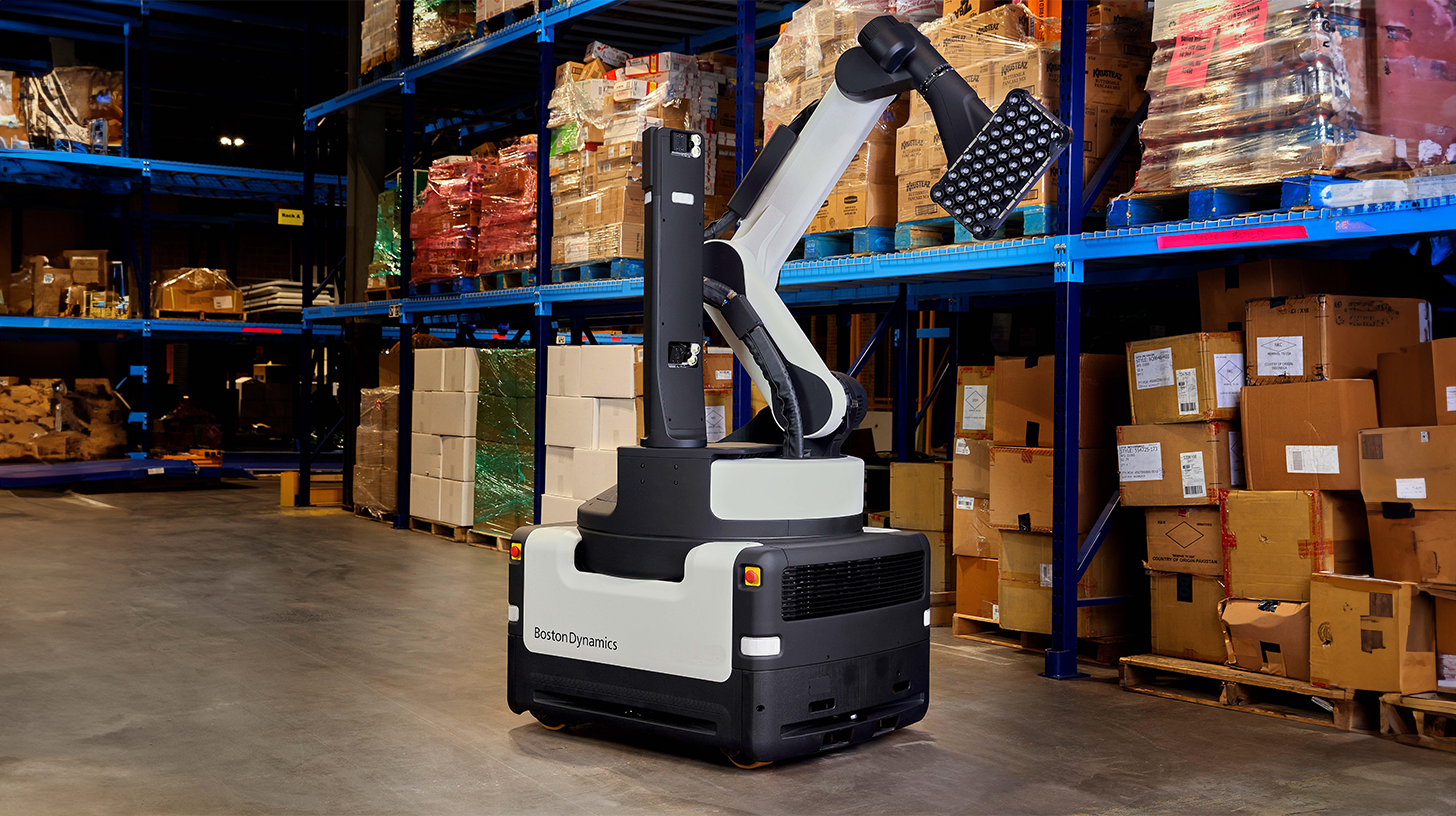
Skillfully levering: From pallets to packages – Why Stretch from Boston Dynamics is the new star in warehouse robotics – Image: Boston Dynamics
📦 Progress in logistics: Stretch takes over the warehouses
Boston Dynamics is a company known worldwide for its impressive robots. The humanoid robot “Atlas” in particular has attracted a lot of attention with spectacular videos in which it shows dynamic movements such as running, jumping and even somersaults. However, less in the spotlight is another robot from the company that could play a significant role in the logistics industry: “Stretch”. Designed specifically for use in warehouses, this innovative robot could revolutionize the way goods are handled in logistics.
Matches:
🔧📦 Stretch: A robot for modern logistics
With “Stretch”, Boston Dynamics has created a robot that is tailored to the specific needs of warehouses. While Atlas fascinates with his human-like movements, Stretch impresses with his efficiency and versatility in handling packages. The robot is equipped with an extendable gripper arm that allows it to handle packages of different sizes and shapes. This capability is particularly important in warehouses that need to process thousands of packages every day - often in various shapes and sizes.
A key advantage of stretch is its mobility. It can move autonomously through a warehouse, easily avoiding obstacles such as shelves or other machines. Thanks to advanced sensor technology, it detects its surroundings precisely and can adapt to changing conditions. This autonomy makes it a valuable resource in modern warehouses, which are increasingly relying on automation to meet increasing demands.
💡🔬 Technological innovations behind Stretch
The technology behind Stretch is based on years of research and development in the field of robotics. Boston Dynamics has used its experience in developing highly dynamic robots to create a robot that not only works efficiently, but can also operate safely in an environment with humans. This is a crucial factor as many warehouses still rely heavily on human labor.
Stretch's extendable gripper arm is equipped with a variety of sensors that allow it to precisely grip and move packages. It doesn't matter whether the package is light or heavy, small or large - Stretch automatically adapts to the respective situation. This flexibility is particularly important in an environment like a warehouse, where requirements are constantly changing.
In addition to sensor technology, Stretch has advanced software that allows him to plan routes and complete tasks efficiently. The software continuously analyzes the environment and adjusts the robot's movements accordingly. This not only increases safety - as collisions are avoided - but also increases productivity.
🚚📦 Applications of Stretch
Stretch was developed specifically for use in warehouses and offers numerous possible applications. One of its main tasks is to pick up packages from pallets or conveyors and transport them to the desired location. This happens completely autonomously - the robot does not need any human assistance with these tasks.
Another important area of application for stretch is unloading trucks. In many warehouses, unloading trucks is a major challenge as it is often done manually and takes a lot of time. Stretch can complete this task significantly faster while reducing physical strain on human workers.
In addition, Stretch can be used when sorting packages. In large logistics centers, thousands of packages have to be sorted every day - a task that is often monotonous and time-consuming. Stretch can handle this task efficiently while minimizing errors that often occur with manual sorting.
🏗️🚀 Advantages for the logistics industry
The introduction of robots like Stretch could bring about profound changes in the logistics industry. One of the biggest problems in this industry is the lack of workers. Many companies are struggling to find enough staff to meet increasing demands - especially during busy periods such as Christmas shopping or Black Friday. Automated systems like Stretch could help solve this problem.
Another advantage of stretch is its ability to reduce costs. By using robots, companies can reduce their operating costs - for example through reduced personnel costs or lower error rates in parcel processing. In addition, robots like Stretch are ready for use around the clock and do not require breaks or vacation days. This significantly increases efficiency and allows companies to make their supply chains faster and more reliable.
Stretch also offers advantages in terms of safety: In many warehouses, accidents occur again and again due to heavy physical work or confusing work environments. By using an autonomous robot, these risks can be minimized. Stretch works precisely and reliably - without signs of fatigue or loss of concentration - which significantly reduces the risk of accidents.
⚙️🚧 Implementation challenges
Despite all these advantages, there are also challenges in implementing robots like Stretch into existing logistics processes. One of them is the high acquisition costs of such systems. While these costs can be recouped in the long term - particularly through operational cost savings - the initial investment could be a hurdle for many small and medium-sized businesses.
Companies must also ensure that their employees receive appropriate training to be able to use such technologies. Even though Stretch works autonomously, its integration into existing systems still requires technical know-how on the part of the staff.
Another point concerns the robot's ability to adapt to different environments: not every warehouse is structured the same or has the same logistical processes. Therefore, stretch must be flexible enough to adapt to different circumstances - be it in terms of space constraints or specific requirements when handling certain types of goods.
🌐📈 The future of logistics: automation as the key
Automation is playing an increasingly important role in the modern logistics industry - not least due to increasing online trading and the associated demand for fast delivery times. Robots like Stretch could play a key role here: They not only enable companies to work faster and more efficiently, but also to react more flexibly to changes in the market.
In the future, we could see even more such innovative solutions - be it through further developments of existing technologies or through completely new approaches in the area of automation. Boston Dynamics has already taken an important step in this direction with Stretch - but the potential for further innovation is enormous.
In summary, while Atlas continues to serve as a flagship for Boston Dynamics and impresses with spectacular videos, Stretch could have just as big an impact in the long term - especially in an industry like logistics that is increasingly reliant on efficiency and automation.
📣 Similar topics
- 🤖 The revolution in logistics through robotics
- 📦 Stretch: Efficient package transport in the warehouse
- 🚛 Autonomous unloading of trucks: Stretch in action
- 💡 Innovative technology behind Stretch
- 📈 Automation as the key to the future of logistics
- 🛡️ Security and efficiency in modern warehouses
- 📉 Cost reduction through the use of stretch
- ⚙️ Challenges when implementing Stretch
- 👷♂️ Stretch as a solution to the labor shortage
- 🔄 Flexible adaptability in logistics through stretch
#️⃣ Hashtags: #Robotics #Logistics #Automation #Efficiency #Technology
Xpert partner in warehouse planning and construction
🤖🚀 The logistics robot *Stretch* from Boston Dynamics: An innovative step towards automation
🌟 The logistics robot Stretch from Boston Dynamics is an innovative step towards complete automation of warehouse processes. Due to increasing digitalization and the e-commerce boom, companies are faced with the challenge of ensuring efficient and reliable warehouse logistics that are at the same time tailored to the individual requirements of warehouses and logistics centers. Designed specifically to meet the needs of non-automated or semi-automated warehouses, Stretch offers a solution that is both flexible and powerful and fits seamlessly into existing workflows.
💡 The importance of stretch for the logistics industry
The logistics automation market continues to grow, and approximately 80% of the world's warehouses are poorly automated. In this context, Stretch was designed to provide a simple automation solution for existing warehouse environments without the need for significant modifications or expensive infrastructure. The robot is capable of meeting the needs of a wide range of warehouse processes while increasing efficiency by relieving human employees of repetitive and physical tasks. Stretch not only helps to optimize work processes, but also contributes to reducing physical strain on employees.
🔧 Functions and technical features of Stretch
Stretch is more than just a conventional robot - it combines advanced sensors, robust hardware and intelligent software that allows it to be highly adaptable to different warehouse environments.
1. Mobility and flexibility
A key feature of Stretch is its omnidirectional mobile base. This allows the robot to move effortlessly in narrow warehouse aisles and confined spaces. It can be used in various warehouse areas, be it loading and unloading trucks, stacking boxes or placing goods on pallets. This mobility means the robot remains flexible and is easy to integrate into existing logistics systems.
2. The gripper arm and handling heavy loads
Stretch features a seven-degree-of-freedom gripper arm equipped with a vacuum suction head. The suction head can safely suck and move boxes and cartons weighing up to 23 kg. Thanks to this feature, Stretch is able to handle a wide range of packaging types and sizes. The precision of the gripper arm and the robust construction make the robot a reliable solution for stacking and sorting, which also significantly increases productivity in the warehouse.
3. Power and efficiency
With a capacity of up to 800 cases per hour, Stretch can in many cases rival the performance of a human worker. In addition, the robot is designed for continuous use and can work for up to eight hours without a charging break. This ensures that Stretch can work effectively even in demanding shifts, significantly reducing the cost per hour of work.
4. Autonomous navigation and intelligent adaptability
Using advanced sensors and a camera system, Stretch navigates autonomously through the warehouse and detects obstacles and changes in the environment. This allows it to dynamically adapt to different warehouse layouts and changing requirements. Thanks to this ability, the robot can be used efficiently and safely even in complex environments. Stretch does not require any custom infrastructure, significantly reducing implementation costs for warehouse operators.
🛠️ Further developments and possible uses in logistics
In addition to Stretch, there are numerous other robotic solutions used in the logistics industry that increase efficiency in various warehouse processes. Some important representatives are:
1. Autonomous Mobile Robots (AMR)
These robots, like those from KUKA or Dematic, navigate autonomously through the warehouse and take on tasks such as transporting containers or picking goods. They are equipped with advanced cameras and laser scanners to detect obstacles and work safely with people. AMRs can be used in different environments and offer a flexible solution for companies that want to gradually automate their warehouse logistics.
2. Storage and retrieval machines
These robots are specially developed for storing and retrieving pallets or containers in high-bay warehouses. They move along the shelves and help to make optimal use of storage capacity. Storage and retrieval machines contribute to efficient and space-saving organization, particularly in high-bay warehouses where space is a valuable asset.
3. Order picking robots
Picking robots, like the Brightpick Autopicker, specialize in collecting and preparing goods for orders. They can process orders more efficiently by specifically removing goods from shelves and delivering them to picking stations. This process speeds up order processing and increases the accuracy when assembling the goods.
🌐 Challenges and perspectives of automation in logistics
The increasing automation of logistics not only brings advantages, but also presents companies with several challenges. One of the biggest hurdles is investing in the necessary technology and infrastructure. Adopting robots like Stretch or AMRs can be costly, especially for small and medium-sized businesses. In addition, the integration of this technology requires an adjustment of work processes and possibly also the training of employees to ensure the optimal use of the robots.
Another aspect is the question of job security. Although robots relieve human employees of physically demanding tasks, increasing automation can also lead to job losses in some cases. Many companies therefore rely on a combination of people and machines, in which robots take on the physically demanding work and people are used for complex, creative or coordination tasks.
Nevertheless, the advantages of automation outweigh the disadvantages. By using robots like Stretch, warehouse operations can increase productivity and increase accuracy while reducing physical strain on employees. Robot solutions also offer decisive advantages in terms of flexibility: companies can react quickly to changing market requirements and adapt their warehouse logistics without the need for extensive structural measures.
🚀 The path to fully automated warehouses
With advances in artificial intelligence and robotics, it is likely that we will see fully automated warehouses in the near future. These warehouses will be able to process orders completely autonomously, from storage to picking and shipping. Robots like Stretch are an important step in this direction, as they demonstrate that robots are capable of handling complex tasks in real warehouse environments.
However, the vision of a fully automated warehouse has not yet been fully achieved. Many technologies are currently still in the development phase and it will take some time before they are used across the board. Nevertheless, it is only a matter of time before robots and AI-based systems revolutionize the logistics industry. Companies that invest in the automation of their warehouses today will have a decisive competitive advantage in the future.
A prime example of the possibilities of modern robot technology in warehouse logistics
The logistics robot Stretch from Boston Dynamics is a prime example of the possibilities of modern robotics in warehouse logistics. With its innovative features and ability to flexibly adapt to existing environments, Stretch offers a solution that increases both efficiency and flexibility. The automation of logistics is still in its early stages, and it will be exciting to see what developments will come our way in the coming years. However, the advantages are already clear today: more productivity, less physical strain on employees and the ability to adapt flexibly to changes in the market.
📣 Similar topics
- 🤖 Advances in warehouse logistics: Stretch from Boston Dynamics
- 🚀 Logistics automation with stretch: A new standard
- 📦 Flexibility and efficiency with stretch in warehouse logistics
- 🤝 Stretch: The answer to the challenges of modern logistics
- ⚙️ Technical innovations from Stretch for efficient warehouse processes
- 📈 Future paths in logistics: Stretch and fully automated warehouses
- 💡 The role of Stretch in warehouse automation
- 🔄 Adaptable automation: Stretch in the changing world of logistics
- 🏭 From manual warehouse to technological progress with stretch
- 🌟 Stretch as a pioneer in the logistics industry revolution
#️⃣ Hashtags: #Stretch #LogisticsAutomation #Robotics #InnovativeStorageSolutions #BostonDynamics
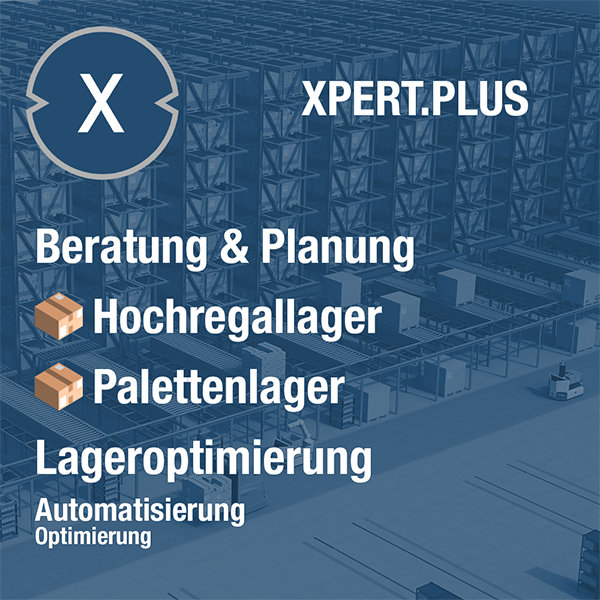
Xpert.Plus warehouse optimization - high-bay warehouses such as pallet warehouses consulting and planning
We are there for you - advice - planning - implementation - project management
☑️ SME support in strategy, consulting, planning and implementation
☑️ Creation or realignment of the digital strategy and digitalization
☑️ Expansion and optimization of international sales processes
☑️ Global & Digital B2B trading platforms
☑️ Pioneer Business Development
I would be happy to serve as your personal advisor.
You can contact me by filling out the contact form below or simply call me on +49 89 89 674 804 (Munich) .
I'm looking forward to our joint project.
Xpert.Digital - Konrad Wolfenstein
Xpert.Digital is a hub for industry with a focus on digitalization, mechanical engineering, logistics/intralogistics and photovoltaics.
With our 360° business development solution, we support well-known companies from new business to after sales.
Market intelligence, smarketing, marketing automation, content development, PR, mail campaigns, personalized social media and lead nurturing are part of our digital tools.
You can find out more at: www.xpert.digital - www.xpert.solar - www.xpert.plus



